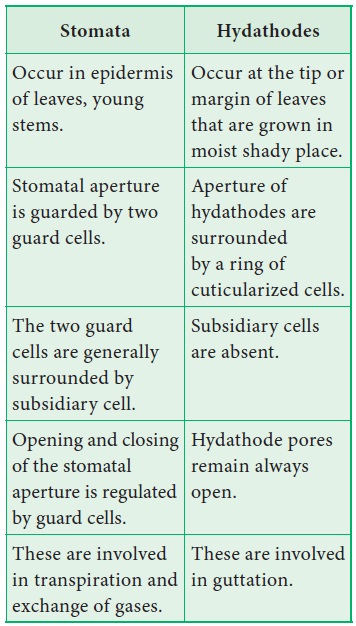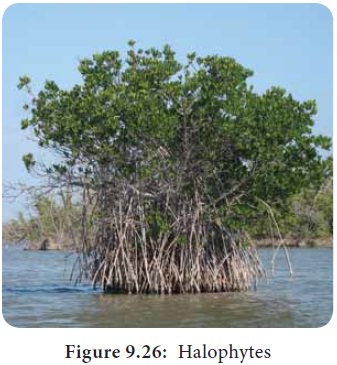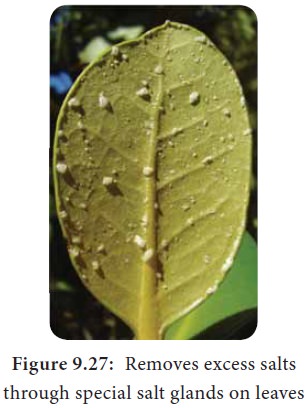Chapter: 11th Botany : Chapter 9 : Tissue and Tissue System
Water Stomata (or) Hydathodes
Water Stomata (or) Hydathodes
A hydathode is a type of epidermal pore,
commonly found in higher plants.
Structurally,
hydathodes are modified stomata, usually located at leaf tips or margins,
especially at the teeth.
Hydathodes
occur in the leaves of submerged aquatic plants such as Ranunculus fluitans as well as in many herbaceous land plants.
Hydathodes
are made of a group of living cells with numerous intercellular spaces filled
with water, but few or no chloroplasts. These cells open out into one or more
sub-epidermal chambers. These, in turn, communicate with the exterior through
an open pore. The water stoma structurally resembles an ordinary stoma, but is
usually larger and has lost the power of movement.They are connected to the
plant vascular system by a tracheid or vessel element.
Hydathodes
discharge liquid water with various dissolved substances from the interior of the
leaf to its surface. This process is called guttation. Example many grasses.
Differences Between Stomata and Hydathodes

Halophiles
•
Plants that grow in salty environment are called Halophiles.
•
Plant growth in saline habitat developed numerous adaptations to salt stress. The secretion of ions by
salt glands is the best known mechanism for regulating the salt content of
plant shoots.
•
Salt glands typically are found in halophytes. (Plants that grow in saline environments)


Related Topics